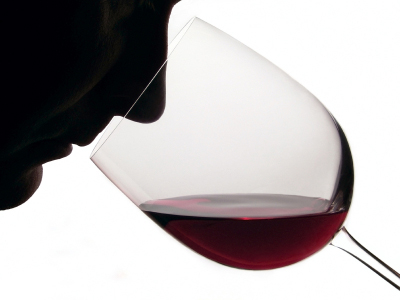A Beginners Guide to Tasting Wine
Friday, October 10, 2014

It is the final frontier for many a booze-lover and the haunt of the annoying know-it-all that you really don’t want to turn in to - it is time to learn how to taste wine.
You’ve probably got someone in the office or family that thinks they know heaps about wine. They probably use words that they think make them sound important, smell their glass loads before they take a small sip and then spit it out.
This may be what people think wine tasting is but it doesn’t have to be that way! One of the worst things about any hobby, whether it is running, wine tasting or record collecting, is a know-it-all. The most important thing about wine tasting is that you enjoy your time and enjoy your wine!
It’s ok to taste different things in the same bottle of wine. Don’t be that guy or girl that talks a little too loud when talking about the wine you're drinking so the people on the next table can hear that you’re a bit of a muppet.
First things first, it is probably best to practice your wine tasting techniques at home. You’re going to want to take your time while you’re learning and you don’t want to be doing that at the table in a busy bar or restaurant. Next time you buy a bottle of wine from your nearest bottle shop, try really tasting the wine rather than just drinking it.
Buy yourself a bottle of whatever takes your fancy. If you normally like a grape variety of wine then stick to your favourite variety and go from there. Maybe try something new, spend a little bit more on a bottle and see what you think - $30 will get you a decent bottle to mess about with!
Open the bottle. If you can’t do this on your own, wine might not be your best friend. If it is a red wine, give it a couple of minutes to stand in the bottle before pouring.
Temperature can have an affect on your wine tasting experience too. White wine and rose should be chilled but what about red wine? It is supposed to be served at room temperature, but room temperature in January and room temperature in July are different things.
Don’t worry too much about keeping your wine at the maximum temperature. It does have an affect - red wine should be served between 18 and 20 degrees whilst whites should be much cooler at 4 to 10 degrees.
When you pour, gently twist the bottle in your hand to stop the bottle from dripping. If you want to learn how to pour wine like an absolute professional (or any other number of bar skills) make sure you check out our hospitality course!
Red and white wine glasses are different (even grape varieties can have different glasses) and you’ll learn all about that in our awesome hospitality course but remember - white wine is a smaller glass and red wine is bigger!
Once in the glass, tilt it and hold it up to the light. You’re not looking for fingerprints so don’t take this step too seriously but pay attention to the clarity and colour of the wine. These two aspects will give you clues to the taste and what to expect.
Depending on the grape variety, the wine takes on different colouration. This means there are differences more minute than red, white and rose. If a red is deeper in colouration, it will taste different to a red that is clearer. Similarly, a white that is more straw-like in colour will taste different to one that is clearer.
Once poured, give it a sniff! What do you smell? Try and break down each aspect of the wine in the glass. At first, you’ll just smell wine but work on it.
Now you’ve got to aerate the wine by giving it a good swill! Leave the base of the wine glass flat on an even surface and swirl the wine around the glass for 10 or 15 seconds before having another sniff.
Swirling the wine gives the aromas a chance to breathe. The first smell of the wine and the second one will be different. Keep swirling and sniffing for a little while, try and break down the smells in the wine.
The smell and the taste of wine do not have to be the same thing. A white wine may give off the smell of fresh cut grass or peaches but it may not necessarily taste like it. As an experiment (after the tasting fun) hold your nose and take a nip of the wine and see what differences you can notice.
When swirling, keep an eye out for the runs along the edge of the glass. The more visible these tears, the stronger the wine should taste as it has a higher alcohol or sugar content.
Once swirled and smelled, take a taste! There is a reason we wanted you to take your tasting at home as many experts believe that breathing through the wine leads to a more intense flavour.
Take a small sip and breath in with the wine still in your mouth - it’s going to sound like Hannibal Lector doing that crazy mouth-noise thing but it should improve the taste of the wine.
Take small sips and make your to coat your entire mouth. After three sips, the wine should settle down a little and you can try and pick apart the different flavours.
Imagine your mouth is split up into different sections, the front of your mouth deals with salt and acid, the side with tannins, and the back gets the bitterness. Think and drink - it sounds easy but it is incredibly difficult and you won’t be good at it your first time out.
Maybe have a pen and paper handy and write down what you taste. Don’t let anybody tell you otherwise, if you can taste strawberries but your mate can taste blueberries don’t get in a blue about it!
The most important thing is that you like the wine! Tasting is great fun and getting to know wine is a brilliant experience but when you find something you like, make a note of it and keep drinking it!!
If you want to learn more about wine, how to serve it and how to drink it, take a look at our amazing courses and jump start your career in hospitality!




